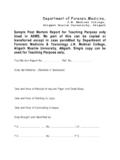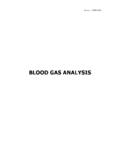Transcription of National List of Essential Medicines of India 2011 - …
1 Page 1 of 126 National List of Essential Medicines of India 2011 Page 2 of 126 TABLE OF CONTENTS PREAMBLE .. 4 EXECUTIVE SUMMARY .. Error! Bookmark not defined. Salient features of NLEM 2011 : .. Error! Bookmark not defined. The meetings/deliberations of core committee/ National consultation meetings held for preparing the National List of Essential Medicines 2011 .. 12 PROCESS ADOPTED FOR REVISION OF NLEM .. 13 POTENTIAL USES OF NLEM .. 15 EXPERTS WHO PARTICIPATED IN PREPARING NLEM- 2011 .. 16 Medicines ADDED IN THE NLEM 2011 .. Error! Bookmark not defined. Medicines DELETED FROM NLEM 2003 .. 29 National LIST OF Essential Medicines 2011 .. 32 Section: 1 Anesthesia .. 32 Section: 2 - Analgesics , Antipyretics, Nonsteroidal Anti-inflammatory Medicines , Medicines used to treat Gout and Disease Modifying Agents used in Rheumatoid Disorders.
2 34 Section: 3 Antiallergics and Medicines used in Anaphylaxis .. 36 Section: 4 - Antidotes and Other Substances used in Poisonings .. 36 Section: 5 Anticonvulsants/ Antiepileptics .. 38 Section: 6 Anti-infective Medicines .. 39 Section: 7 Antimigraine Medicines .. 47 Section: 8 Antineoplastic, immunosuppressives and Medicines used in palliative care .. 48 Section: 9 Antiparkinsonism Medicines .. 51 Section: 10 Medicines affecting the blood .. 52 Section: 11 Blood products and Plasma substitutes .. 53 Section: 12 Cardiovascular Medicines .. 54 Section: 13 Dermatological Medicines (Topical).. 58 Section: 14 Diagnostic agents .. 60 Section: 15 Disinfectants and antiseptics .. 61 Section: 16 Diuretics .. 62 Page 3 of 126 Section: 17 Gastrointestinal Medicines .. 63 Section: 18 Hormones, other endocrine Medicines and contraceptives .. 66 Section: 19 Immunologicals.
3 68 Section: 20 Muscle Relaxants (Peripherally acting) and Cholinesterase Inhibitors .. 71 Section: 21 Ophthalmological Preparations .. 72 Section: 22 Oxytocics and Antioxytocics .. 73 Section: 23 Peritoneal Dialysis Solution .. 75 Section: 24 Psychotherapeutic Medicines .. 75 Section: 25 Medicines acting on the respiratory tract .. 77 Section: 26 Solutions correcting water, electrolyte and acid-base disturbances .. 78 Section: 27 Vitamins and Minerals .. 79 Alphabetical List of Medicines Therapeutic area wise .. 80 Alphabetical List of Medicines in NLEM 2011 .. 97 List of Medicines in NLEM 2011 Category Wise .. 111 Page 4 of 126 PREAMBLE Essential Medicines are those that satisfy the priority healthcare needs of majority of the population. The Essential Medicines list needs to be country specific addressing the disease burden of the nation and the commonly used Medicines at primary, secondary and tertiary healthcare levels.
4 The Medicines in National List of Essential Medicines (NLEM) should be available at affordable costs and with assured quality. The Medicines used in the various National health programmes, emerging and reemerging infections should be addressed in the list. The Government of India , Ministry of Health & Family Welfare (MOHFW) is mandated to ensure the quality healthcare system by assuring availability of safe and efficacious Medicines for its population. The primary purpose of NLEM is to promote rational use of Medicines considering the three important aspects cost, safety and efficacy. Furthermore it promotes prescription by generic names. Healthcare delivery institutions, health insurance bodies, standards setting institutions for Medicines , medicine price control bodies, health economists and other healthcare stakeholders will be immensely benefitted in framing their policies.
5 Page 5 of 126 The NLEM 2011 has been prepared after several rounds of wide consultations with experts of different disciplines from different parts of the country and from various organizations. The NLEM is a dynamic document and feedback from all stakeholders is welcome which will help in its revision at regular basis. The core committee of NLEM 2011 would like to place on record its appreciation for the subject experts who made a significant contribution in revision and updating the list of Essential Medicines of India . Page 6 of 126 EXECUTIVE SUMMARY The National list of Essential Medicines is one of the key instruments in balanced healthcare delivery system of a country which inter alia includes accessible, affordable quality medicine at all the primary, secondary, tertiary levels of healthcare.
6 Realizing this GOI, MOHFW decided to have its own Essential Medicines list. The first National List of Essential Medicines of India was prepared and released in 1996. This list was subsequently revised in 2003. To address the issues of changing disease prevalence, treatment modalities, introduction of newer Medicines and identification of unacceptable risk-benefit profile as well as therapeutic profile of some Medicines , the GOI, MOHFW considered the need for updating the NLEM. Revision of NLEM was also based on the two important National reference documents , Indian Pharmacopeia 2010 and National Formulary of India , 4th Edition, 2010. While the former deals with the standards of identity, purity and strength of Medicines the later provides the information on rational use of Medicines particularly for healthcare professionals.
7 Page 7 of 126 In order to revise the NLEM 2003, a core committee was constituted vide order no: 12-01/ Essential Medicines / 08-DC dated 6th July 2010 GOI, MOHFW with following members. Prof. Y. K. Gupta, Head, Department of Pharmacology, All India Institute of Medical Sciences, New Delhi Prof. Sharma, Head, Department of medicine , All India Institute of Medical Sciences, New Delhi Dr. Sidhu, Medical Superintendent, Dr. Ram Manohar Lohia Hospital, New Delhi Dr. A. K. Harit (Chief Medical Officer) representing DDG (M), Dte. GHS, Ministry of Health & Family Welfare, New Delhi Dr. D. Kanungo, Addl. DG (Stores) Dte. GHS, Ministry of Health & Family Welfare, New Delhi Dr. Chander Shekhar, Scientist F, Indian Council of Medical Research, New Delhi Dr. Sukarma S. Tanwar, National AIDS Control Organization, New Delhi Mr.
8 V. K. Tyagi, Deputy Industrial Advisor, Department of Pharmaceuticals, Ministry of Chemicals and Fertilizers, New Delhi Page 8 of 126 Dr. G. N. Singh, Secretary-cum-Scientific Director, Indian Pharmacopoeia Commission, Ghaziabad Dr. Surinder Singh, Drugs Controller General ( India ), , Ministry of Health & Family Welfare, New Delhi The first meeting of the core committee of NLEM was held at CDSCO on July 22, 2010. The meeting was initiated by DCGI, Dr. Surinder Singh, Dr. Y. K. Gupta, Professor & Head, Department of Pharmacology, AIIMS, New Delhi was unanimously nominated as chairman of the Committee. During this meeting the core committee was informed that the CDSCO had already taken an initiative in this direction and organized a workshop entitled Expert Group Meeting on Revision and Updating of the National List of Essential Medicines on September 16, 2009 in collaboration with Department of Pharmacology, AIIMS and WHO India Office.
9 The workshop was attended by representatives from the following: CDSCO, Ministry of Health; WHO; All India Institute of Medical Sciences, New Delhi; Indian Pharmacopoeia Commission; Indian Council of Medical Research and experts of different disciplines from leading medical and pharmacy institutions of the country. The issue of updating NLEM was also deliberated in a dedicated session during the Annual Conference of Indian Pharmacological Society, December 2009 at Page 9 of 126 Kolkata and the session was chaired by Prof. Y K Gupta, AIIMS and Dr. K Weerasuriya, WHO-SEARO. The core committee took note of the proceedings of these two meetings while revising the NLEM. In this core committee meeting it was deliberated that although WHO has prepared an updated list of Essential Medicines , it cannot be adopted as such.
10 The NLEM of India should be country specific considering the disease prevalence, cost effectiveness of Medicines etc in the country. In the meeting the criteria for inclusion/ deletion of Medicines were developed and a road map for the revision and updating of NLEM, 2003 was drawn. Sh. V. K. Tyagi from Department of Pharmaceuticals (DoP), Ministry of Chemicals & Fertilizers emphasized the importance of NLEM in view of the directions of the Hon ble Supreme Court of India . He also mentioned that DoP may rely on the NLEM prepared by MOH &FW for price fixation. During the meeting it was felt that opinion/views may be taken from across the country by organizing brainstorming regional workshops. However, considering the logistics and time constraints it was decided that a National consultation meet should be organized in Delhi inviting experts from various specialties and from different parts of the country.

















